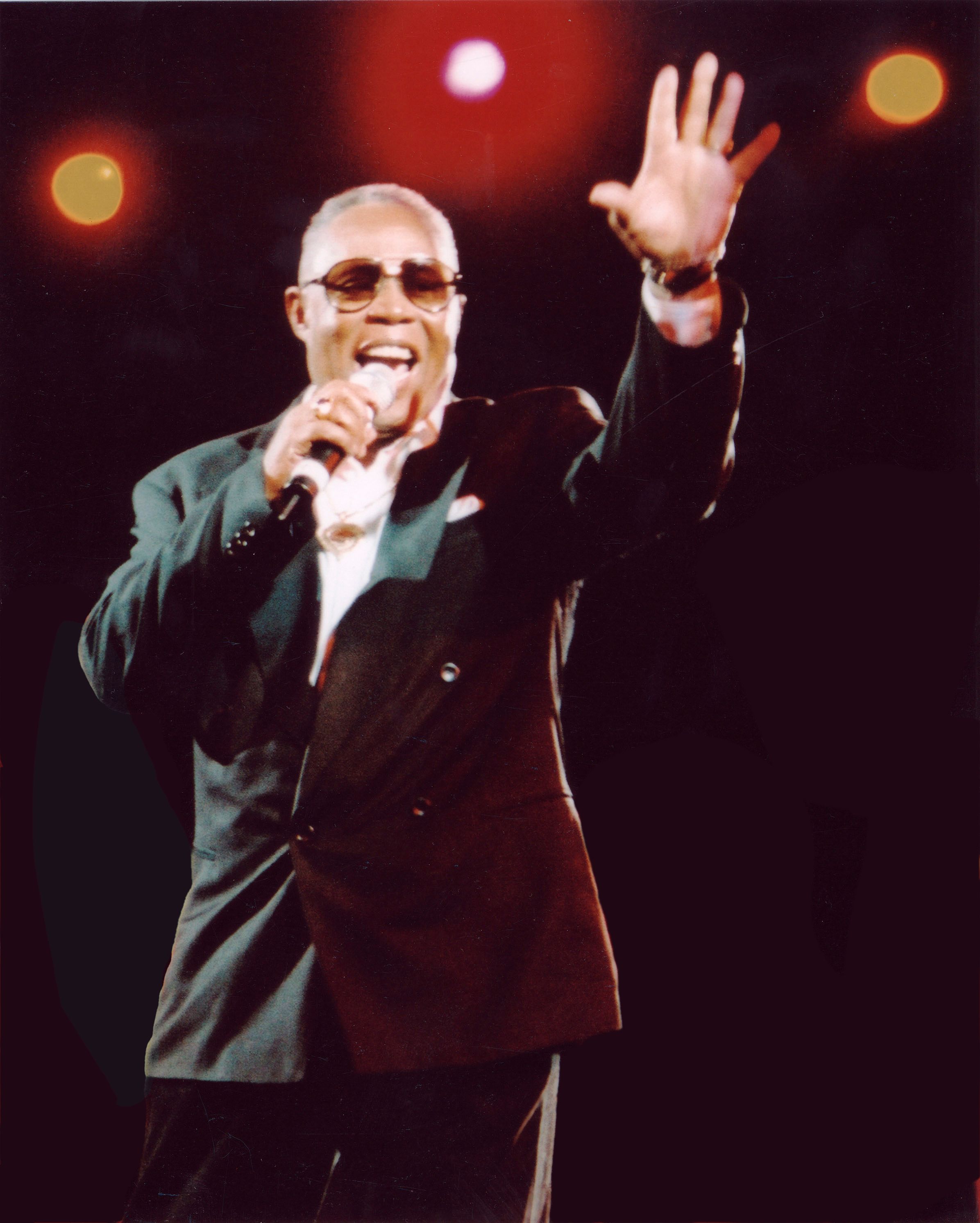Sam Moore, the towering tenor and surviving half of the indelible 1960s soul duo Sam & Dave, whose electrifying voice propelled hits like “Soul Man” and “Hold On, I’m Comin’,” has died at 89. His passing on Friday morning in Coral Gables, Florida, due to complications while recovering from surgery, marks the end of an era for one of American music’s most distinctive and influential voices. Moore, along with his late partner Dave Prater, crafted a sound that was at once raw and refined, transforming the call-and-response tradition of gospel into a vibrant, frenzied stage spectacle that captured the hearts of audiences worldwide.
The duo’s work, primarily at the legendary Memphis-based Stax Records, left an indelible mark on rhythm and blues, establishing them as cultural titans whose influence would ripple through generations of musicians. From the gritty authenticity that defined the Stax sound to their high-energy live performances, Sam & Dave cemented their place in the pantheon of soul music, achieving crossover appeal that saw their records not only dominate the R&B charts but also climb the pop charts, making them household names in a racially charged but artistically vibrant decade.
Moore’s journey, one marked by profound musical triumphs, personal challenges, and enduring resilience, extended far beyond the heyday of Sam & Dave. Admirers from Bruce Springsteen to Al Green lauded his talent, with Springsteen notably calling him “one of America’s greatest soul voices” and even “the greatest living soul singer on the planet.” This article delves into the foundational chapters of Moore’s extraordinary life and career, examining his formative years, the serendipitous meeting that forged a legendary partnership, their rise to prominence at Stax, the brilliant minds behind their iconic sound, their revolutionary stage presence, and the enduring legacy of their most celebrated anthem.
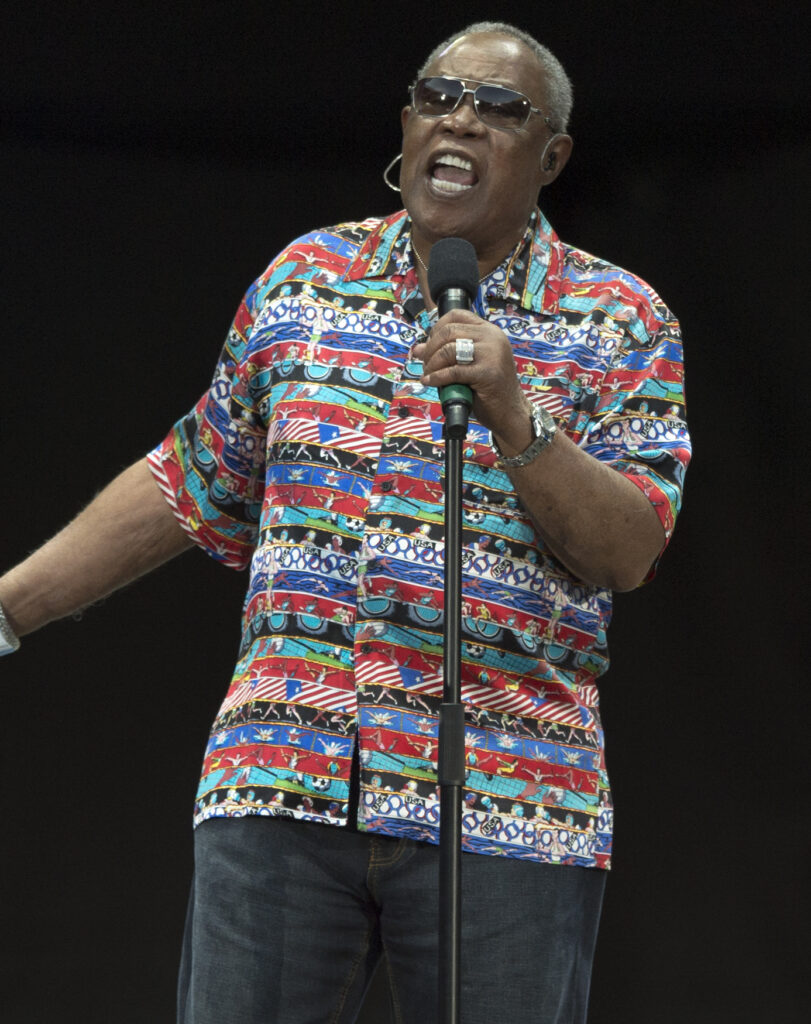
1. The Passing of a Soul Legend: Sam Moore’s Final Chapter
Sam Moore’s death on Friday morning in Coral Gables, Florida, due to complications from an unspecified surgery, brought a poignant close to a life lived in the key of soul. His wife and manager, Joyce Moore, confirmed the news, noting that he had undergone surgery earlier in the week and was in recovery. The announcement sent ripples through the music community, prompting heartfelt tributes from across the industry and beyond, underscoring the profound impact of his nearly seven-decade-long career.
Bruce Springsteen, a long-time friend and collaborator, expressed the collective sorrow, stating on Instagram, “Over on E Street, we are heartbroken to hear of the death of Sam Moore, one of America’s greatest soul voices. He was filled with stories of the halcyon days of soul music, and to the end had that edge of deep authenticity in his voice I could only wonder at.” Springsteen’s sideman, Steve Van Zandt, similarly honored Moore on X, crediting Sam & Dave as the inspiration for his own band, Southside Johnny and the Asbury Jukes.
Moore’s enduring status as a musical icon was not merely a retrospective acknowledgment; he remained active, recording and performing throughout his later years. He was a frequent presence at the Kennedy Center Honors and continued to perform for various presidents, a testament to his timeless appeal and respected artistry. His final solo release, “Overnight Sensational,” in 2006, featured collaborations with prominent artists including Springsteen, Sting, and Bon Jovi, showcasing his continued relevance and the reverence he commanded from his peers.
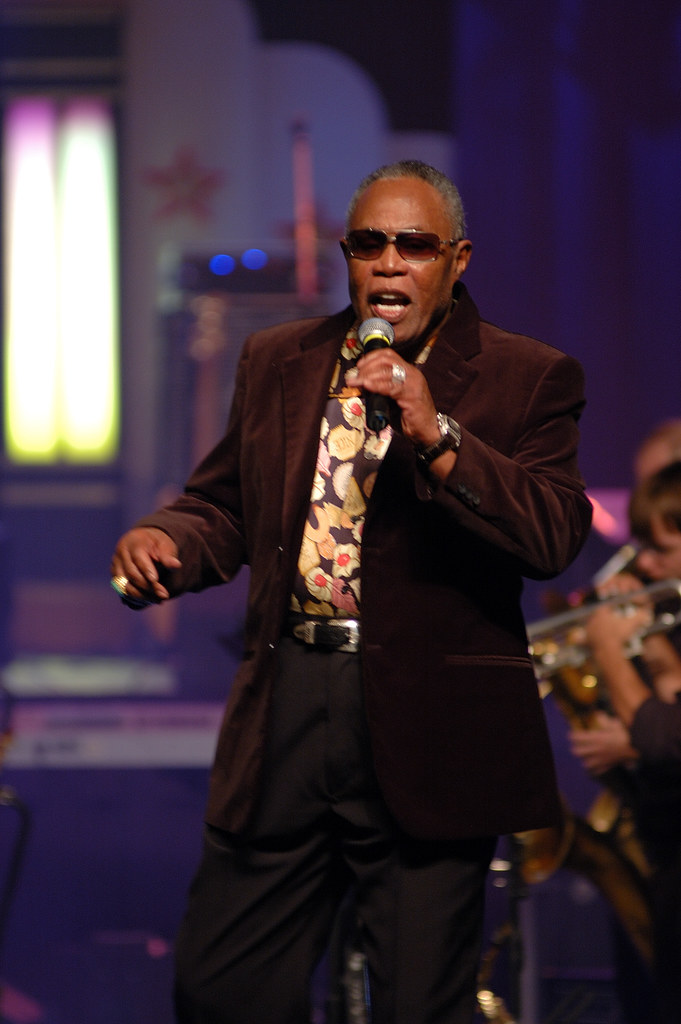
2. From Miami Churches to Club Stages: The Genesis of Sam Moore’s Voice
Samuel David Moore was born in Miami on October 12, 1935, and his vocal journey began, as it did for many soul luminaries, in the sacred spaces of the church. Growing up in the city’s Overtown and Liberty City neighborhoods, he cultivated his distinctive tenor singing in local churches, a pursuit encouraged by his mother, Louise Robinson, who sought to imbue his voice with gospel soul. His early life in Miami provided the fertile ground from which his powerful vocal instrument would emerge, shaping the spiritual fervor that would become a hallmark of his secular performances.
While his friends and family, including fellow soul singer Sam Cooke, encouraged him to remain in gospel music, Moore harbored different aspirations. An encounter with Jackie Wilson performing at a local club ignited his desire for a broader stage, fueling his ambition to transcend the gospel circuit and become a pop star. This pivotal moment marked a shift in his artistic trajectory, setting him on a path that would lead him from local Miami clubs to international fame.
Moore later confessed to a period in his early life where he earned “something of a living from pimping,” providing a candid glimpse into the complexities of his formative years prior to his musical breakout. He described it as a reflection of the environment he was in, stating, “I was a local hero, not a big star. Women like you? Let them pay you. That’s how things were done on my side of the street. I was surrounded by that kind of behavior; it was accepted. But I didn’t make much money from it.” This period, though brief, adds a layer of raw realism to the narrative of an artist who emerged from diverse experiences to find his voice.

3. The Formation of a Dynamic Duo: Sam & Dave’s Origins
The serendipitous meeting that would alter the course of soul music occurred in 1961 at Miami’s King O’ Hearts Club, where Moore was working as an emcee and talent show host. It was there that he encountered Dave Prater, a nervous aspiring gospel singer from Georgia, who was struggling through an audition. Recognizing raw talent, Moore stepped in, helping Prater remember the lyrics to a song, and an immediate vocal connection was forged.
Their voices, both deeply rooted in gospel, proved an undeniable match. Moore’s aching, swooping tenor blended seamlessly with Prater’s gruff baritone, creating a unique vocal chemistry that quickly captivated local audiences. Within a short period, the pair developed an act that became a popular draw in Miami’s R&B and soul clubs, showcasing a burgeoning dynamic that hinted at future greatness.
Their talent did not go unnoticed. Steve Alaimo, then a young University of Miami pre-med student who would later become a significant singer and producer, was electrified by their performances at the King O’ Hearts. Alaimo, then in his early twenties, saw star quality in the duo and subsequently produced and co-wrote early recordings that helped Sam & Dave secure their initial record deal with Roulette Records. This early partnership laid the groundwork for their eventual ascent to major label status.

4. The Signature “Call and Response”: Defining Sam & Dave’s Live Prowess
Sam & Dave’s distinctive musicality was perhaps most vividly expressed in their dynamic transformation of gospel music’s traditional “call and response” into a frenzied and electrifying stage show. This unique interpretation infused their performances with an unbridled energy and spiritual intensity that resonated deeply with audiences, establishing them as one of the most compelling live acts of their era. Their ability to translate the emotional depth of the church into a secular, high-octane performance set them apart.
On stage, the duo earned evocative monikers such as “Double Dynamite” and the “Sultans of Sweat,” epithets that accurately captured the raw power and physical intensity they brought to every performance. Their live shows were celebrated for their energetic, infectious quality, which perfectly complemented the high caliber of their studio recordings. This synergy between recorded artistry and live spectacle ensured that their music was not just heard but profoundly felt, creating an immersive experience for their audiences.
Their influential stage presence extended beyond mere entertainment, serving as a powerful inspiration for subsequent generations of musicians. Steve Van Zandt, a sideman for Bruce Springsteen, publicly acknowledged this impact, stating that Sam Moore and Dave Prater were the direct inspiration for him and Johnny Lyon (Southside Johnny) to form Southside Johnny and the Asbury Jukes. This attests to how Sam & Dave’s pioneering approach to live performance set a benchmark for energy, charisma, and audience engagement in the realm of soul music.
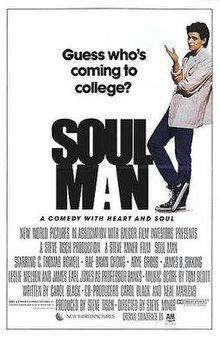
5. The Enduring Anthem: “Soul Man” and Its Cultural Resonance
Among Sam & Dave’s impressive catalog of hits, “Soul Man” stands as their enduring signature tune, a song that transcended musical genres to become a cultural touchstone. Released in 1967, the track, with its insinuating brass lines and Sam Moore’s powerful, molasses vocals, quickly rose to prominence, topping the R&B charts and rocketing to No. 2 on the all-genre pop charts. Its widespread appeal underscored the duo’s significant crossover success at a pivotal moment in American history.
“Soul Man” earned critical acclaim and widespread recognition, winning a Grammy Award in 1968 for best performance by an R&B group. This victory placed them above formidable contenders such as Marvin Gaye and Tammi Terrell’s “Ain’t No Mountain High Enough” and Smokey Robinson and the Miracles’ “I Second That Emotion,” further solidifying its status as a monumental achievement in music. The song’s robust composition and heartfelt delivery resonated profoundly, earning it a place in the Grammy Hall of Fame in 1999.
Beyond its musical brilliance, “Soul Man” carried a deeper cultural significance. Reportedly inspired by the civil rights riots in Detroit, the song climbed the charts during a period of massive racial tension in the country. Its lyrics, which spoke to themes of resilience and identity, offered an anthem for the times, reflecting and influencing the broader social narrative. This made “Soul Man” more than just a hit record; it became a powerful emblem of an era, echoing the struggles and triumphs of a changing nation and cementing its legacy as one of Rolling Stone’s 500 Greatest Songs of All Time.
The narrative of Sam Moore’s extraordinary life, while marked by soaring musical achievements, was also a testament to resilience forged through significant personal and professional challenges. Beyond the shimmering spotlight of their Stax heyday, the dynamic duo of Sam & Dave navigated a turbulent relationship, artistic shifts, and profound struggles that tested the very fabric of their partnership and individual paths. This concluding section examines the later chapters of Moore’s journey, from the complexities of his relationship with Dave Prater and his ventures into a solo career, to his remarkable recovery from addiction and his influential role as an advocate and esteemed performer on the national stage.

6. The Tumultuous Partnership and Eventual Split of Sam & Dave
The electric chemistry that Sam Moore and Dave Prater showcased on stage often belied a deeply strained and frequently contentious relationship behind the scenes. While their voices blended seamlessly in gospel-rooted harmonies, their personal dynamic was reportedly far from harmonious. The duo, sometimes referred to as ‘Double Dynamite,’ were known for their explosive live performances, yet it was widely reported that they ‘could hardly stand each other’s presence’ off stage.
This internal discord intensified as their career progressed through the late 1960s. A particularly dark period saw Prater shoot his then-wife during an argument in 1968, an incident that further soured the partnership. Moore later recounted to the Independent in 2002: “After the incident with the gun, I said to Dave, ‘Look, I’ll sing with you, but I’ll never talk to you again, ever.’ So for 12 years, we worked together, but our lives were completely separate.” This stark declaration underscores the profound professional, yet deeply personal, chasm that developed between them.
The artistic and personal tensions ultimately led to Sam & Dave’s initial breakup in 1970, marking the end of their most prolific period at Stax. The termination of Atlantic’s distribution deal with Stax in 1968 further complicated their situation, leaving them to work directly with the larger company while their personal relationship continued to deteriorate. Though they reunited several times over the years, the underlying animosity and Prater’s deepening substance abuse issues, alongside Moore’s own struggles, ensured their reunions were fraught. Their final performance together occurred in San Francisco on New Year’s Eve in 1981, closing a chapter on one of soul music’s most iconic, yet complicated, partnerships.

7. Moore’s Solo Endeavors and Post-Duo Career
Following the initial split of Sam & Dave in 1970, Sam Moore embarked on a solo career, an endeavor that faced immediate challenges and setbacks. His promising solo debut album for Atlantic, titled “Plenty Good Lovin’,” was recorded throughout 1970. This project notably featured musical luminaries such as producer and saxophonist King Curtis, with guest appearances from Aretha Franklin and Donny Hathaway, signaling a strong artistic direction.
However, fate intervened tragically when King Curtis was murdered on the steps of his Manhattan apartment in 1971. In the wake of this devastating event, Atlantic Records made the decision to shelve the album, denying Moore the solo platform he sought at that critical juncture. It would be decades later, in 2002, before “Plenty Good Lovin’” finally saw the light of day, a testament to its enduring quality despite its long suppression.
During the struggles of the 1970s and early 1980s, Moore found himself in demanding circumstances, performing on cruise ships and at “oldies shows.” He candidly recalled opening for groups of Elvis impersonators and even having to audition for some engagements. This period, marked by a sense of humility and perseverance, highlighted the determination required to sustain a career in music outside the mainstream spotlight, a stark contrast to his earlier superstardom. His final solo release, “Overnight Sensational,” arrived in 2006, showcasing his continued relevance and willingness to innovate.

8. Collaborations with Musical Luminaries: Springsteen and Beyond
Even as Sam Moore navigated the complexities of a post-Sam & Dave career and personal struggles, his singular vocal talent continued to attract the admiration and collaboration of prominent artists across the music spectrum. Bruce Springsteen, a steadfast admirer and close friend, frequently lauded Moore as “one of America’s greatest soul voices” and even “the greatest living soul singer on the planet.” Their artistic bond led to significant musical exchanges over the years.
Moore lent his distinctive backup vocals to Springsteen’s 1992 album “Human Touch” and later appeared on Springsteen’s 2023 release, “Only the Strong Survive.” On the latter, they shared vocals on captivating covers of “Soul Days” and “I Forgot to Be Your Lover,” showcasing their harmonious blend. Springsteen’s sideman, Steve Van Zandt, also publicly acknowledged Sam & Dave’s profound influence, crediting them as the direct inspiration for forming Southside Johnny and the Asbury Jukes.
Beyond his work with Springsteen, Moore’s 2006 solo album, “Overnight Sensational,” became a star-studded affair, demonstrating the high regard in which he was held by his peers. The album featured collaborations with an impressive roster of artists, including Sting, Bon Jovi, Wynonna Judd, Mariah Carey, Eric Clapton, and Steve Winwood, among others. These collaborations reaffirmed Moore’s status as a revered figure capable of bridging genres and generations through his timeless vocal artistry.

9. The Blues Brothers Revival and its Complex Legacy
A significant and somewhat paradoxical resurgence for Sam & Dave’s music occurred in the late 1970s through the unexpected success of the Blues Brothers. Comedians John Belushi and Dan Aykroyd, portraying their “Saturday Night Live” characters, recorded a cover of “Soul Man” in 1978. This new version, featuring many of the original Stax musicians, propelled the song back into the charts, reaching No. 14 on the Hot 100 and introducing it to a new generation of listeners.
While the Blues Brothers’ rendition undoubtedly injected new life into the song and brought renewed attention to Sam & Dave, Moore harbored mixed feelings about its impact. He acknowledged that “On one hand, ‘Soul Man’ was good for us,” recognizing the financial and recognition benefits. However, he also lamented its downside, calling it “an albatross around Sam Moore’s neck.”
The source of Moore’s ambivalence stemmed from the phenomenon of young people believing the song originated with the Blues Brothers, eclipsing the original artists. He expressed a poignant hope: “Hopefully, one day I can hear somebody say, ‘It was Sam and Dave singing, not John and Danny.’” Despite this nuanced perspective, the Blues Brothers’ cover undeniably played a crucial role in extending the cultural life of “Soul Man” and bringing the Sam & Dave legacy to a wider, albeit sometimes misinformed, audience.
Read more about: Burt Reynolds, Enduring Icon of Film and Television, Dies at 82, Leaving a Legacy of Charisma and Depth
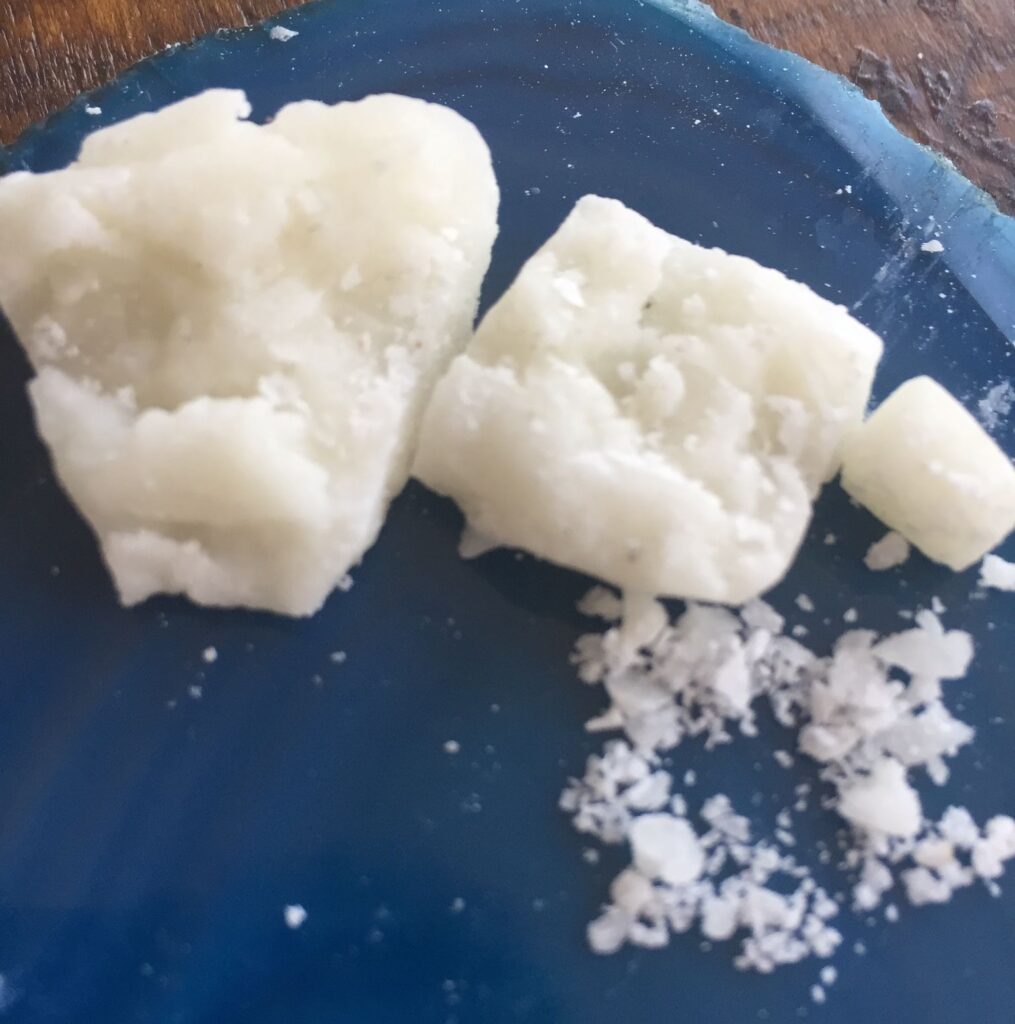
10. Overcoming Personal Adversity: Addiction and Recovery
Sam Moore’s life, beneath the veneer of musical triumph, was marked by profound personal struggles, most notably a severe heroin and cocaine addiction that deeply impacted his career and personal relationships. He candidly admitted that his drug habit played a significant role in the troubles that plagued Sam & Dave, and later made entertainment executives wary of offering him a fresh start as a solo artist.
The pressures of the music industry and the personal dissolution of his partnership with Prater contributed to the deepening of his addiction. Moore revealed to SFGate in 2002, “You’ve got to understand all the money that I had was going into my arms.” This stark reality left him financially vulnerable, compelling him to work even when his relationship with Prater was at its most strained. He lamented that the record company had told him “nobody wanted to hear me without Dave.”
A turning point arrived in 1982 when Moore married Joyce McRae. Joyce became not only his wife but also his manager, and she played a critical role in his recovery journey. She helped him get treatment, notably enrolling him in a clinical trial of the anti-opiate Naltrexone. Moore credited her intervention with saving his life, marking a profound personal rebirth that allowed him to rebuild his career and personal well-being, shedding the burdens of a past fraught with addiction.

11. Advocacy, Presidential Performances, and Enduring Influence
Beyond his musical contributions, Sam Moore developed a distinctive public presence as an advocate for musicians’ rights and a respected performer for multiple U.S. presidents. In 1993, he joined numerous artists in pressing legal claims against the record industry, alleging that they had been cheated out of retirement benefits. Moore revealed to The Associated Press in 1994 that his pension, despite million-selling records, amounted to a mere $2,285 lump sum or $73 monthly payments, leading him to protest, “If you’re making a profit off of me, give me some too. Don’t give me cornbread and tell me it’s biscuits.”
Moore’s political involvement extended to unique performances for several U.S. presidents, including Jimmy Carter, George H.W. Bush, Bill Clinton, George W. Bush, Barack Obama, and Donald Trump. His engagement with political figures was sometimes met with scrutiny, as seen when he objected to Obama’s campaign using “Hold On, I’m Comin'” in 2008 and when he performed at Donald Trump’s inaugural festivities in 2017. Regarding the latter, Moore stated to Tucker Carlson that he would not “let them, the left side, intimidate me from doing what I feel is the right thing to do for the country.”
His dedication to music and his community remained strong throughout his later years. He was a frequent performer at the Kennedy Center Honors, where he delivered a moving rendition of “Take Me to the River” in tribute to Al Green in 2014. Moore also served as artist-in-residence at Florida International University, inspiring new generations. Inducted into the Rock and Roll Hall of Fame in 1992, and a recipient of a lifetime achievement award from the Recording Academy in 2019, Sam Moore’s legacy transcends his hits, encapsulating a life of powerful advocacy, unwavering patriotism, and an enduring impact on the very definition of soul.
Read more about: Unmasking the Pedestal: 15 Revered Historical Figures Whose Dark Sides Will Shock You
Sam Moore’s passing at 89 brings to a close a truly remarkable chapter in American music, yet his resonant voice and spirit continue to echo through time. From the raw energy of his Overtown beginnings to the hallowed halls of the Rock and Roll Hall of Fame, Moore’s journey was a vibrant tapestry of immense talent, formidable challenges, and profound resilience. He was more than half of a legendary duo; he was a ‘Soul Man’ in the truest sense, leaving an indelible mark that will inspire and move listeners for generations to come. His music, his struggles, and his steadfast commitment to artistry and justice paint the portrait of a man whose legacy will forever be intertwined with the very soul of American popular culture.

